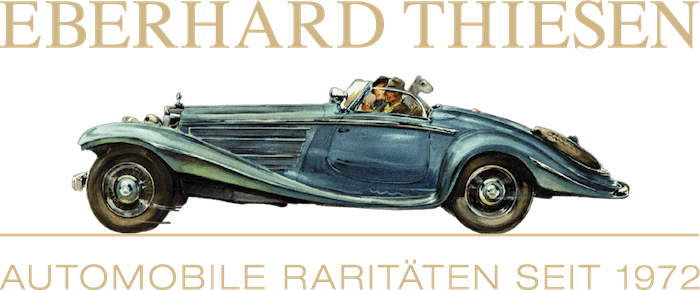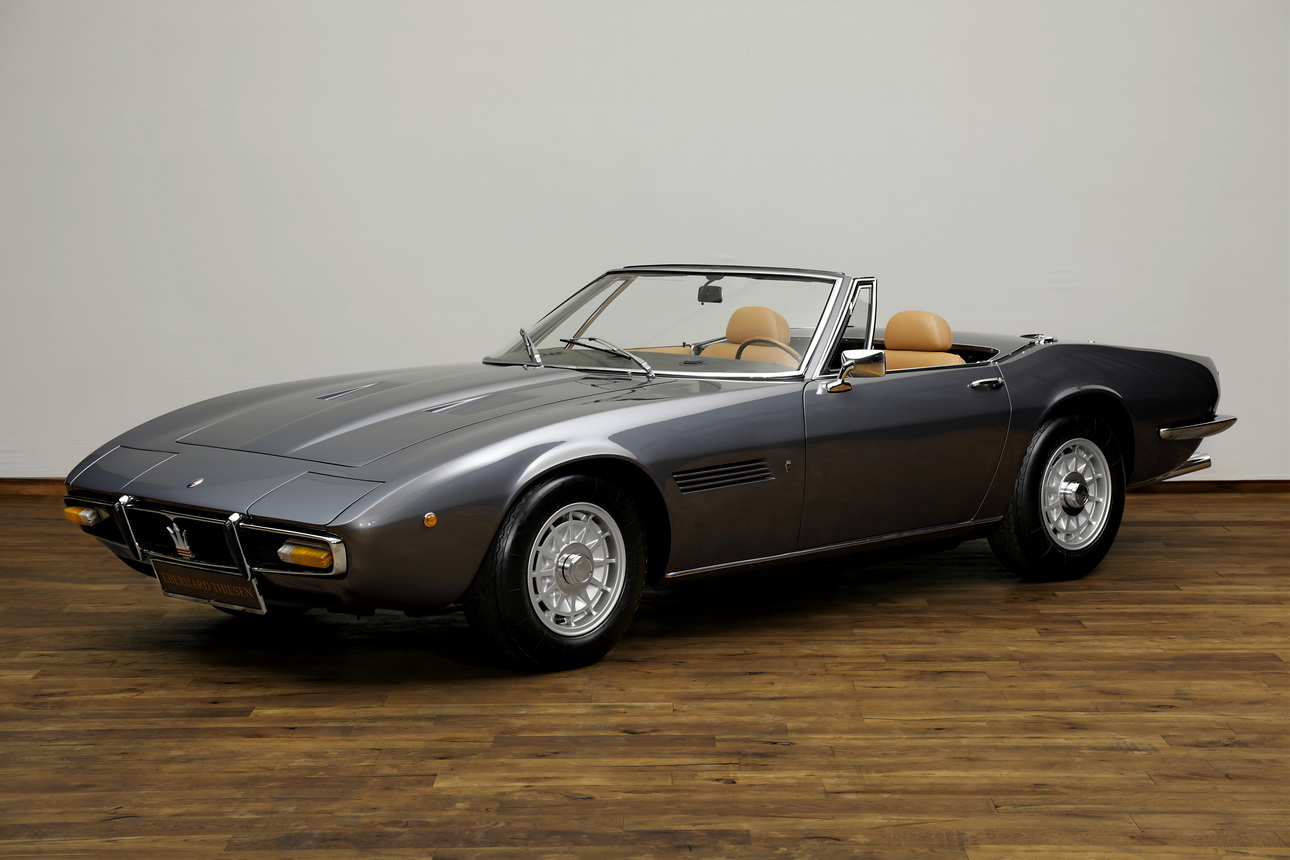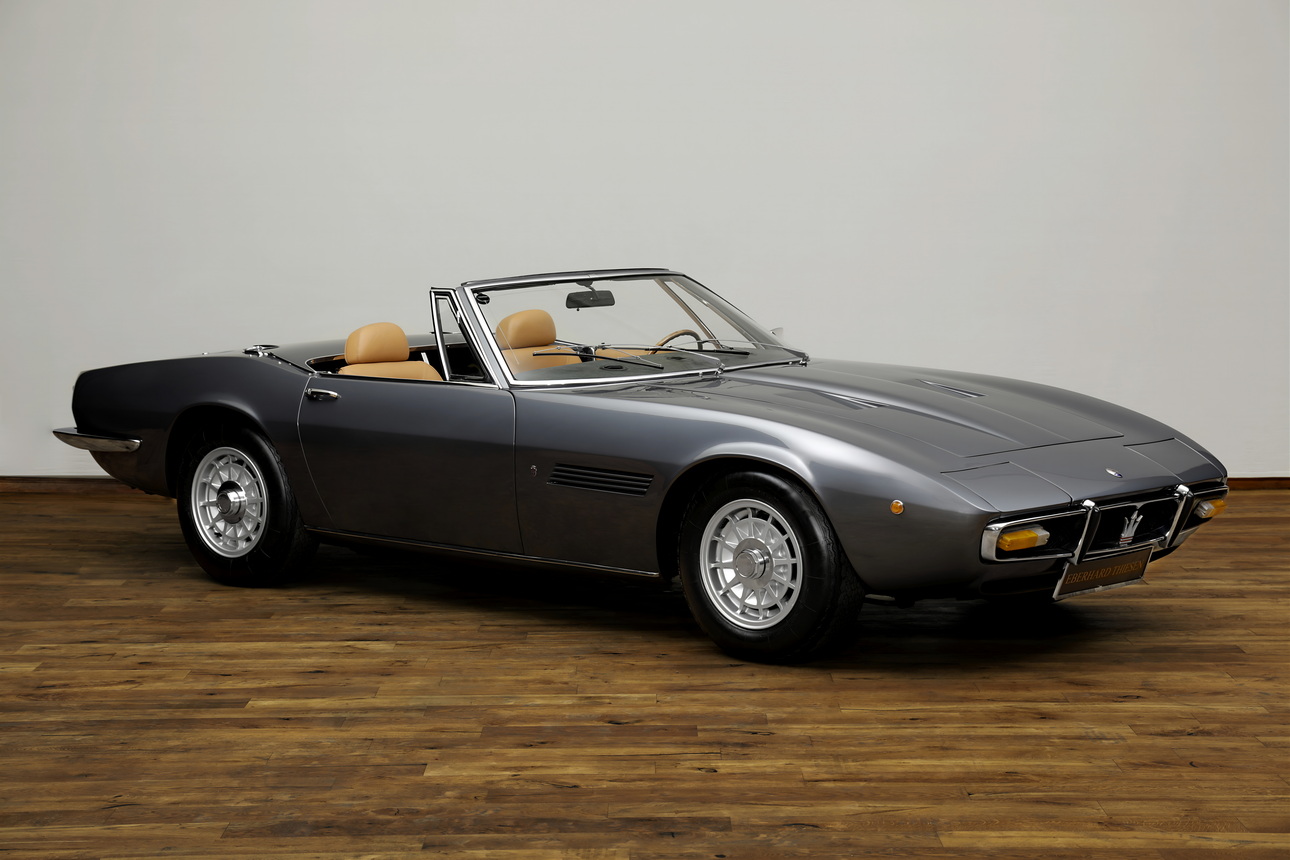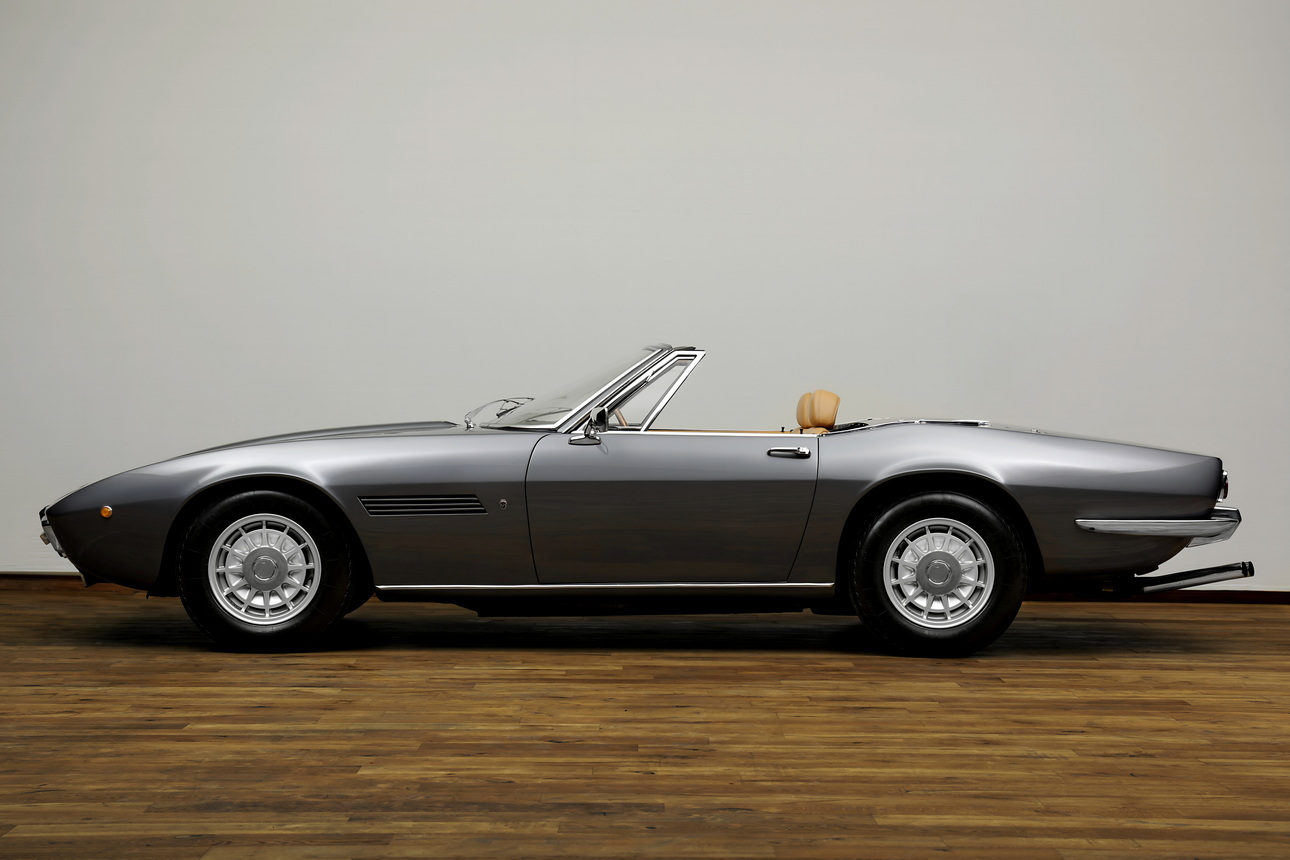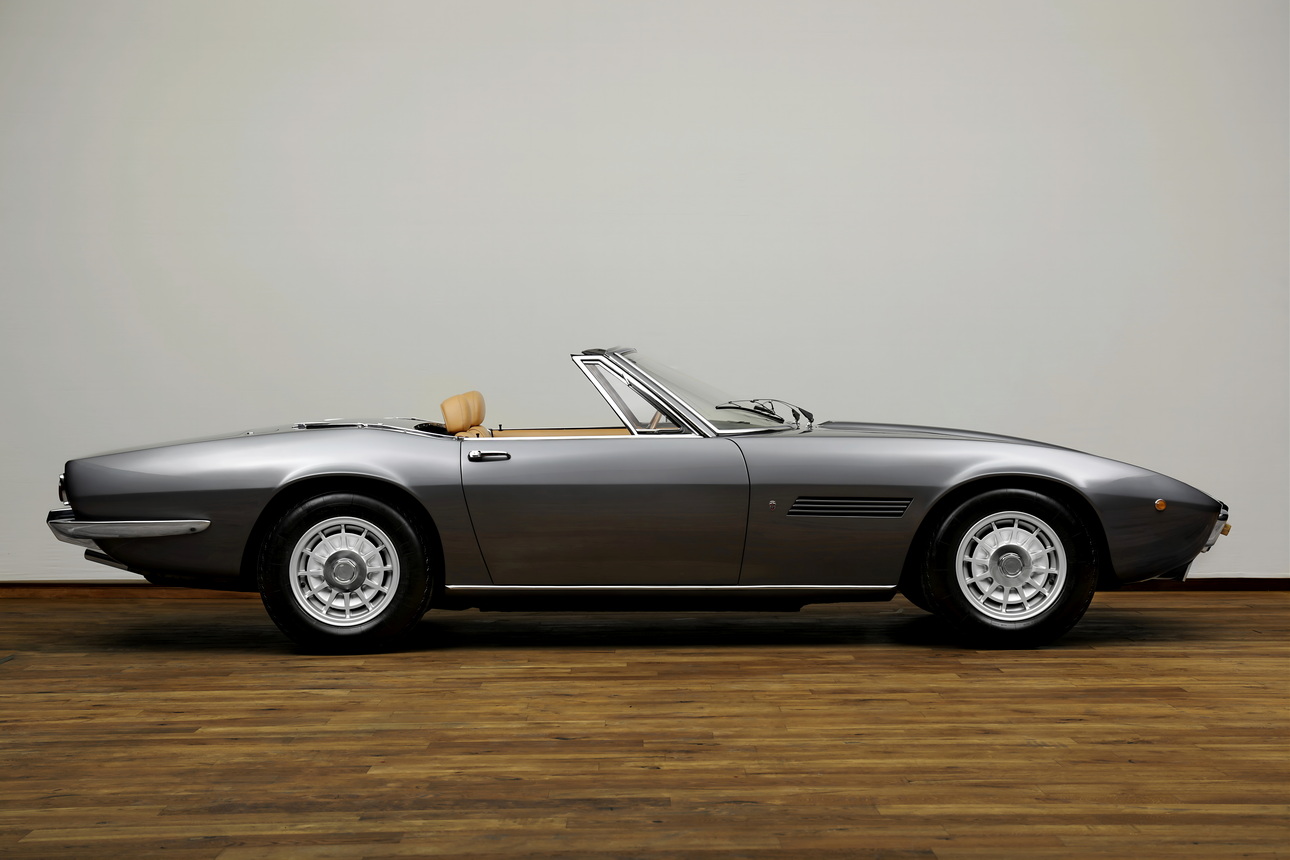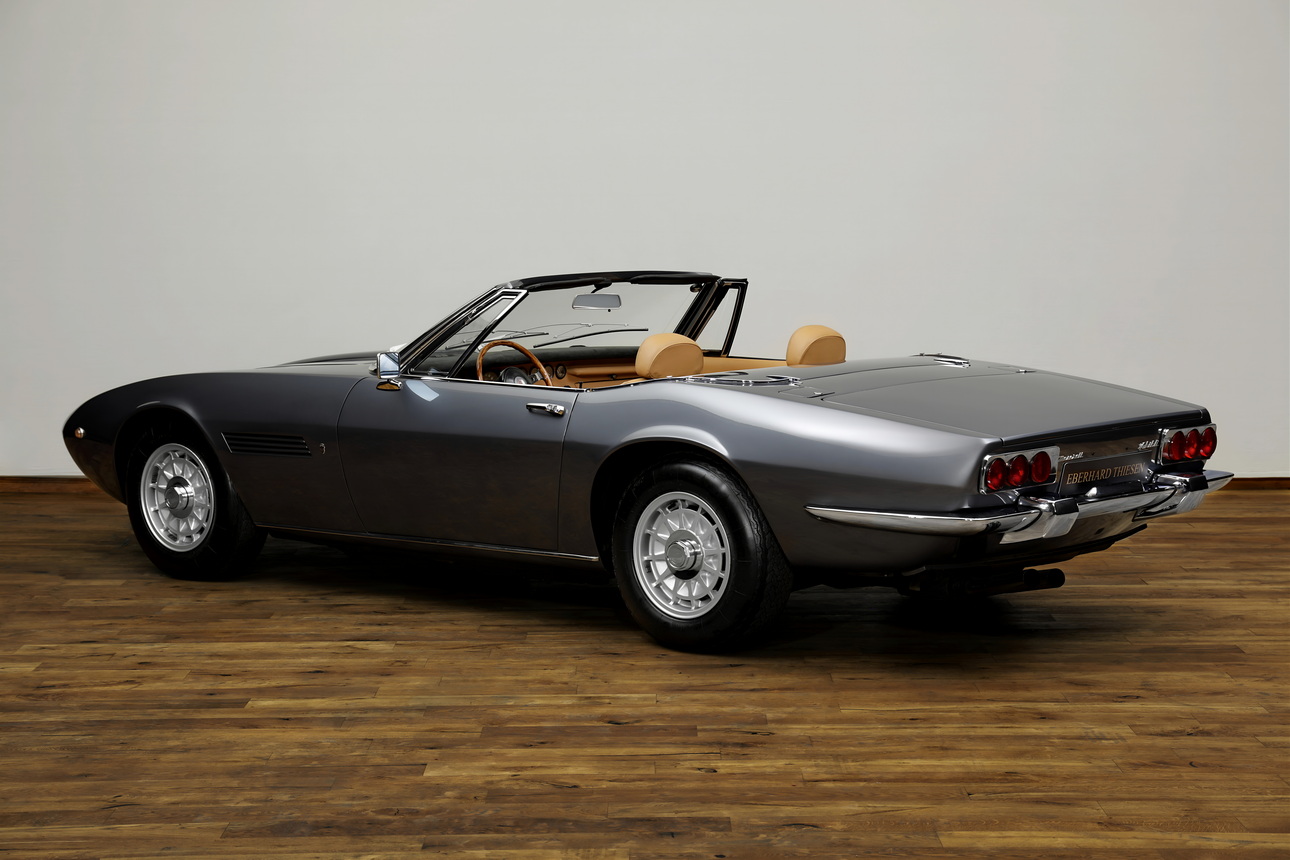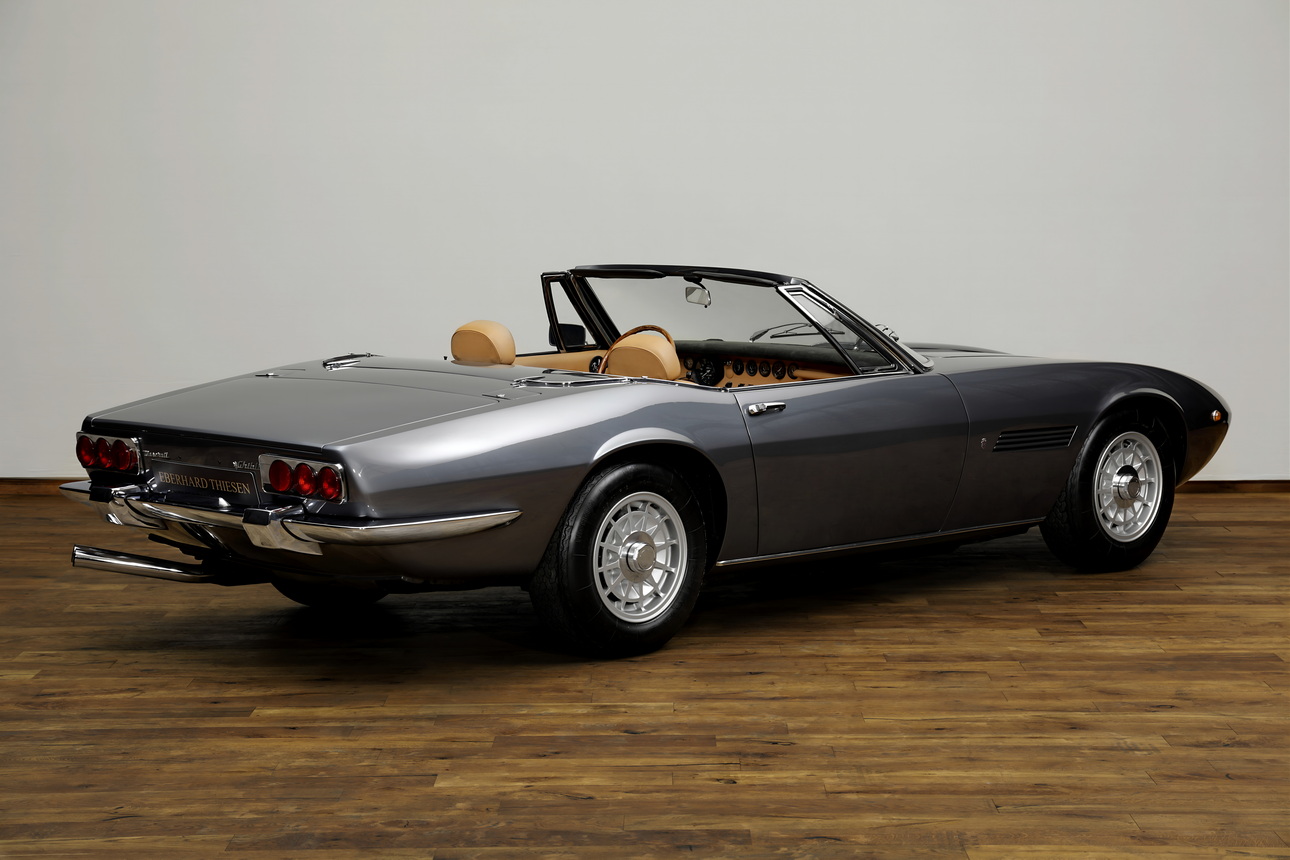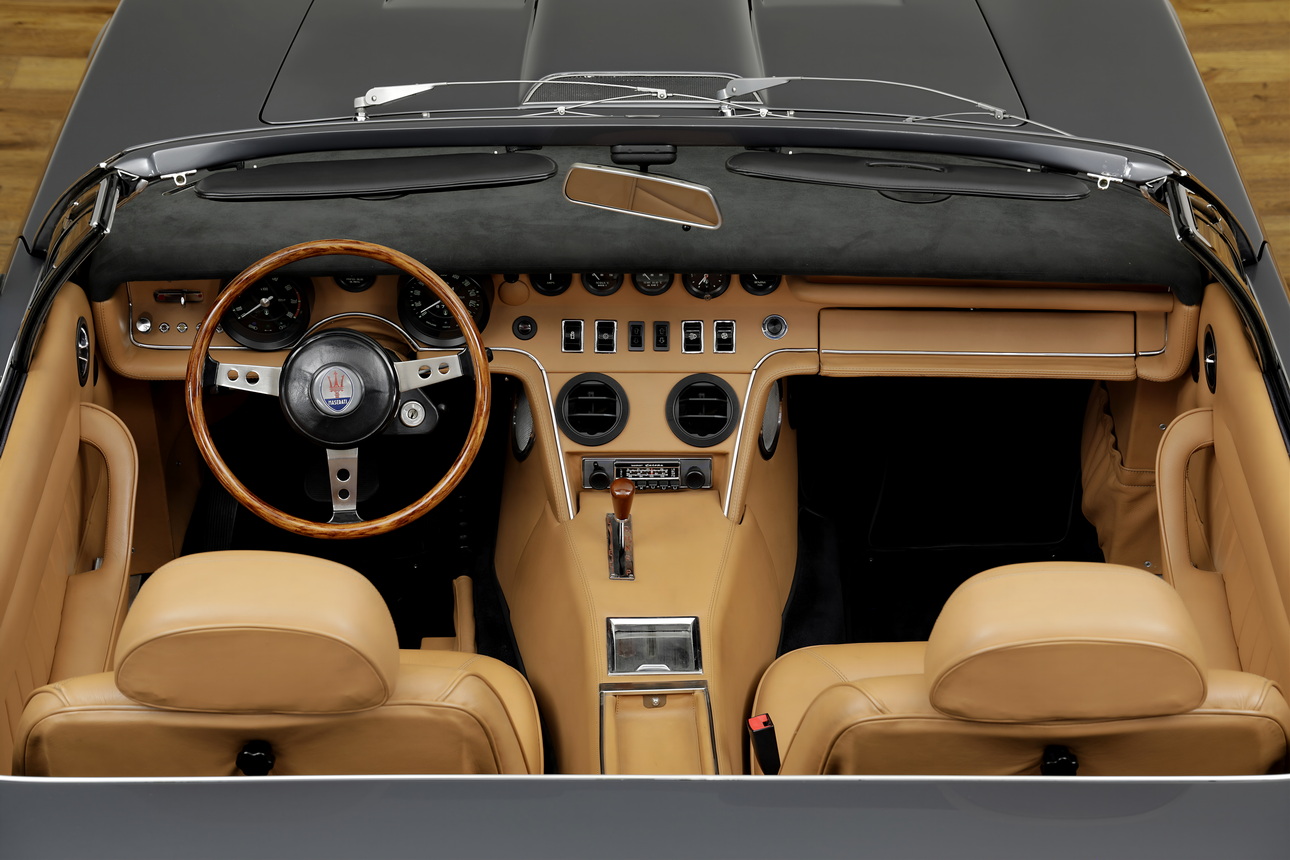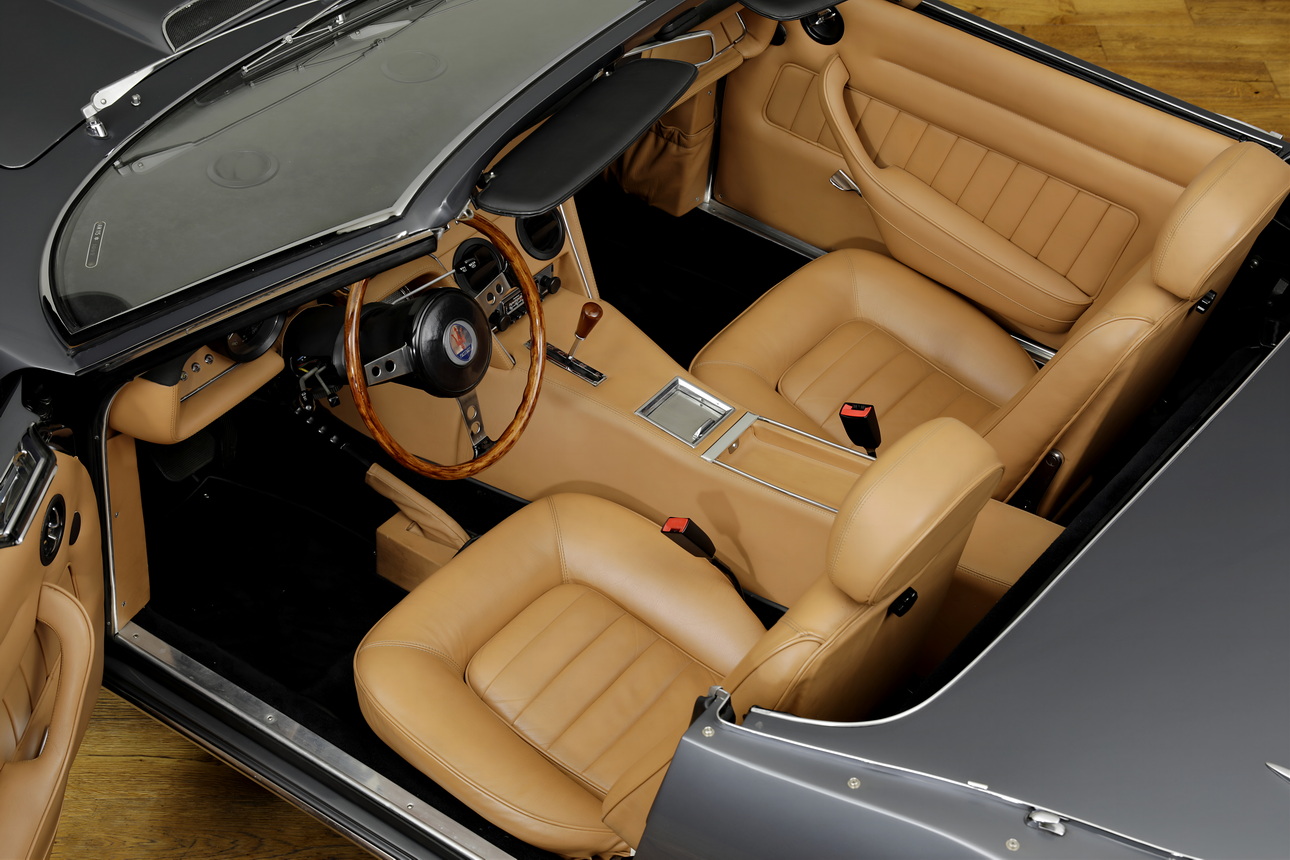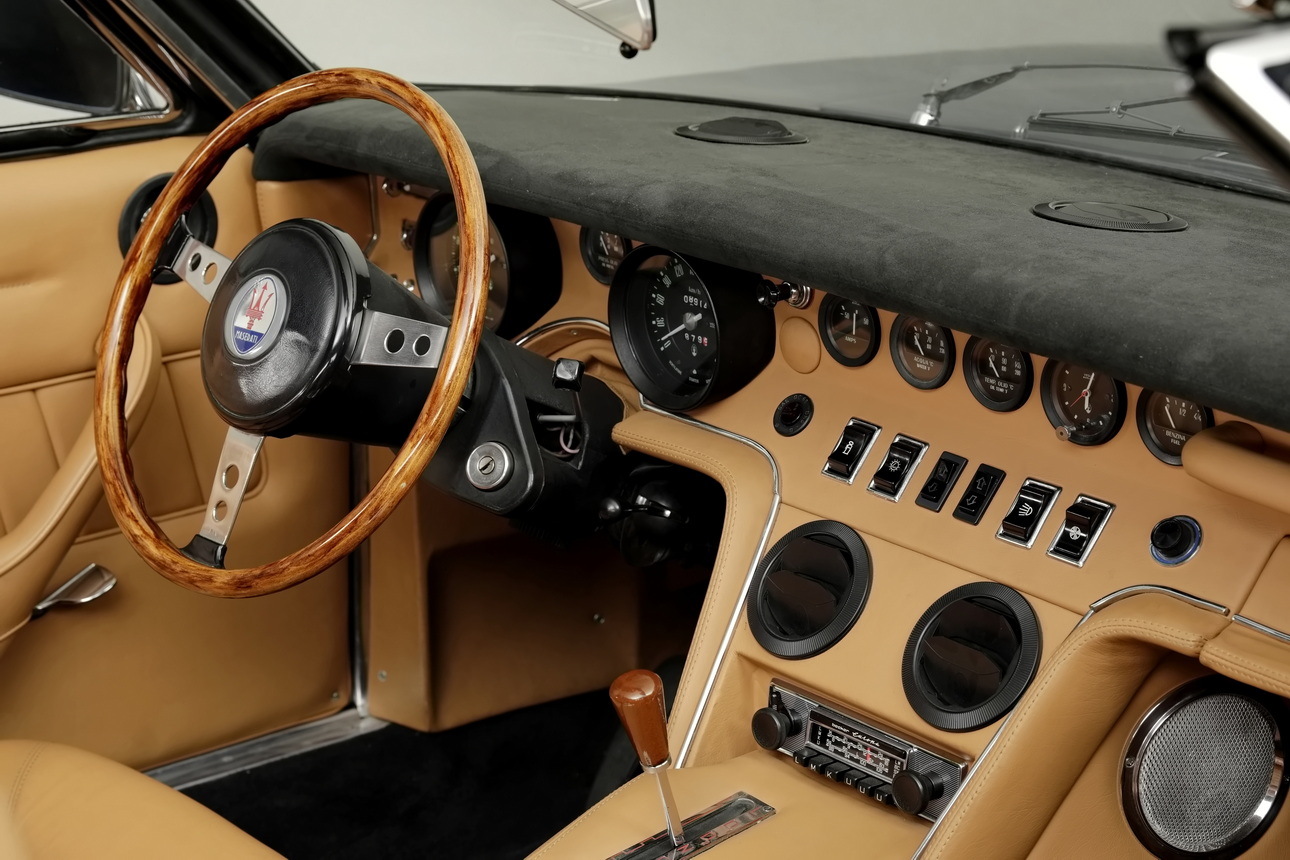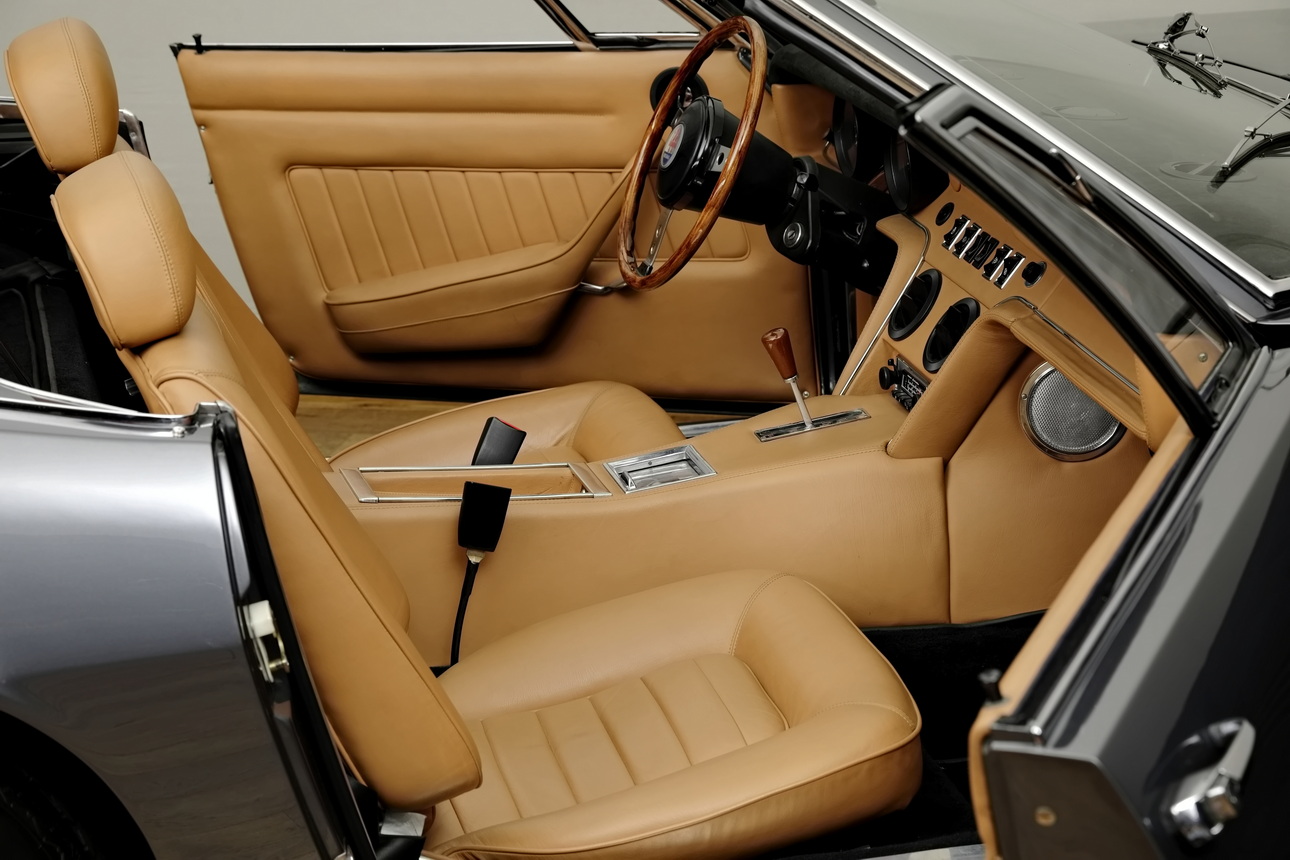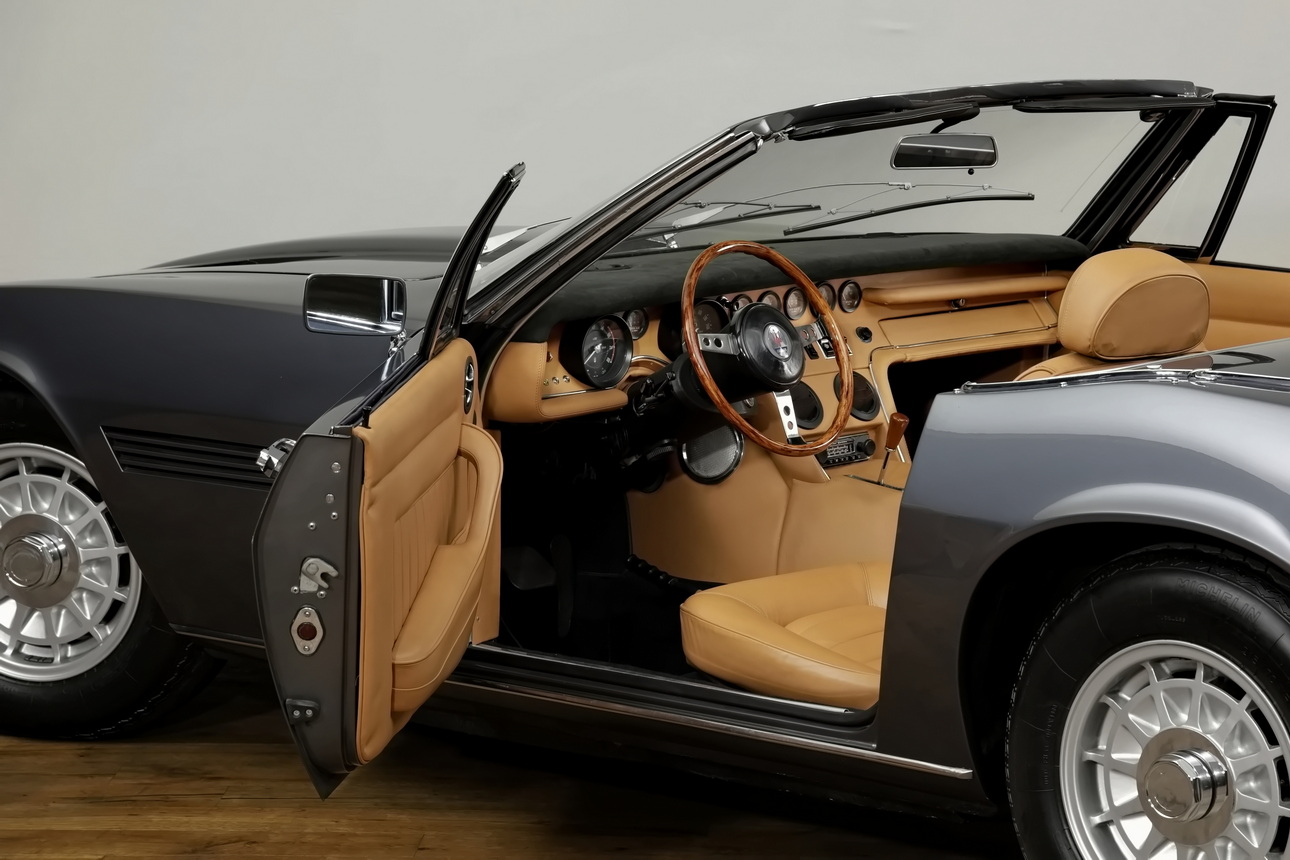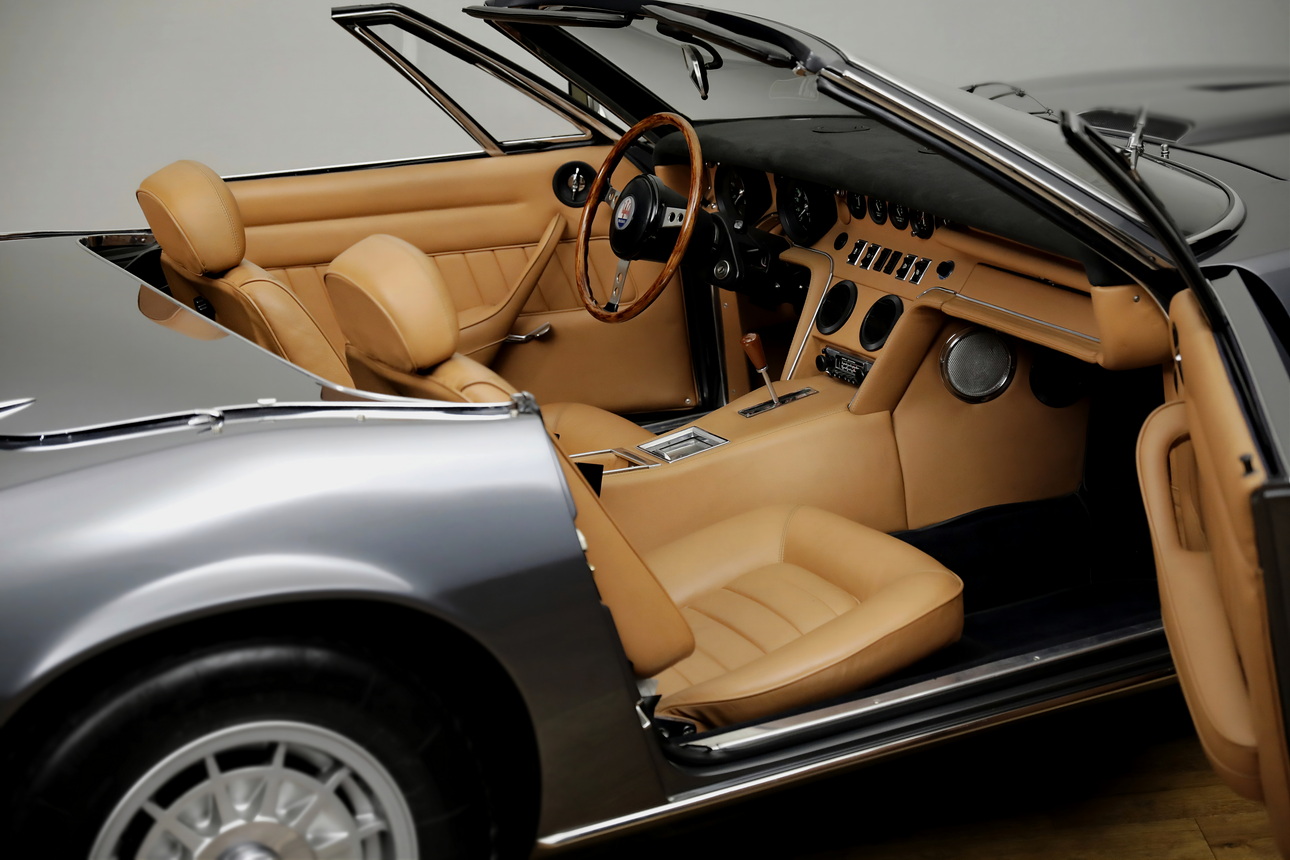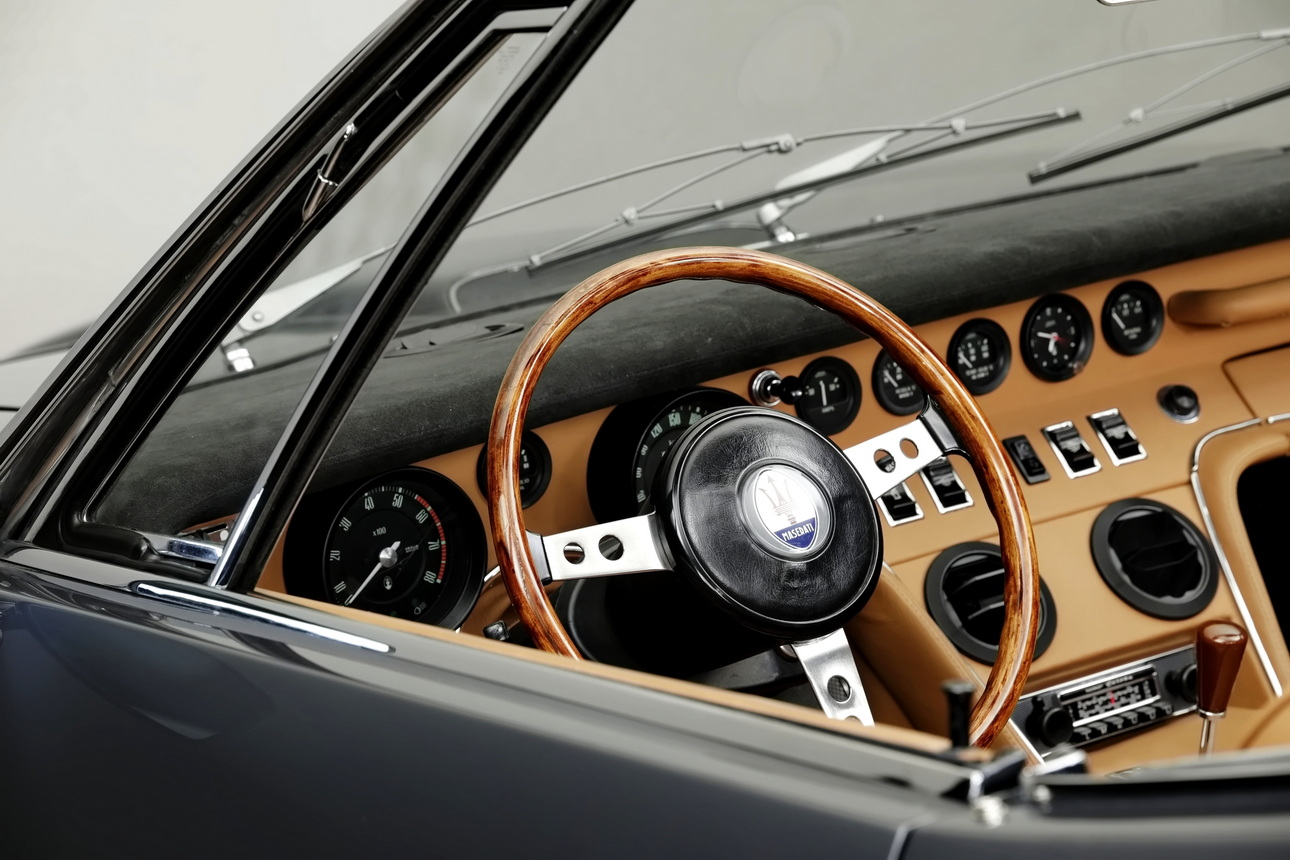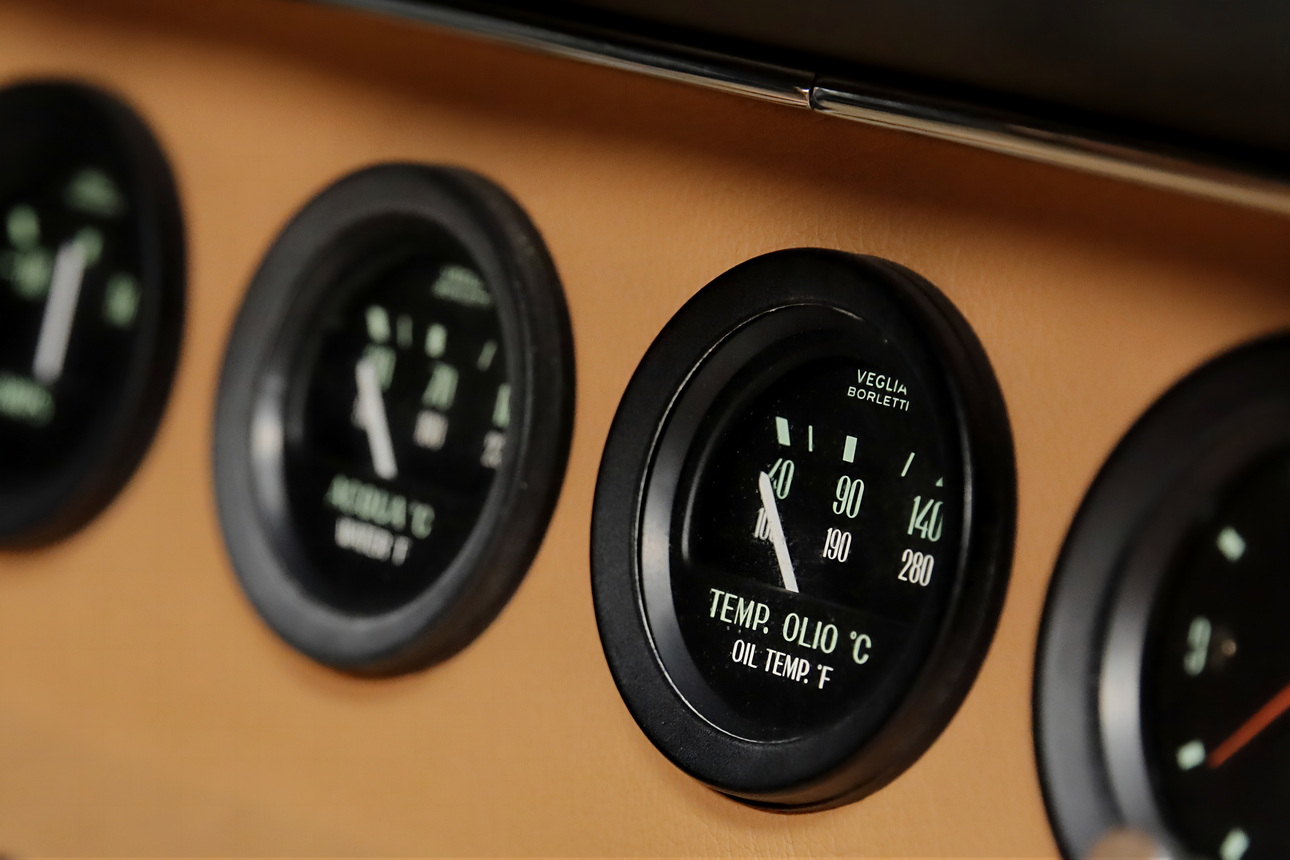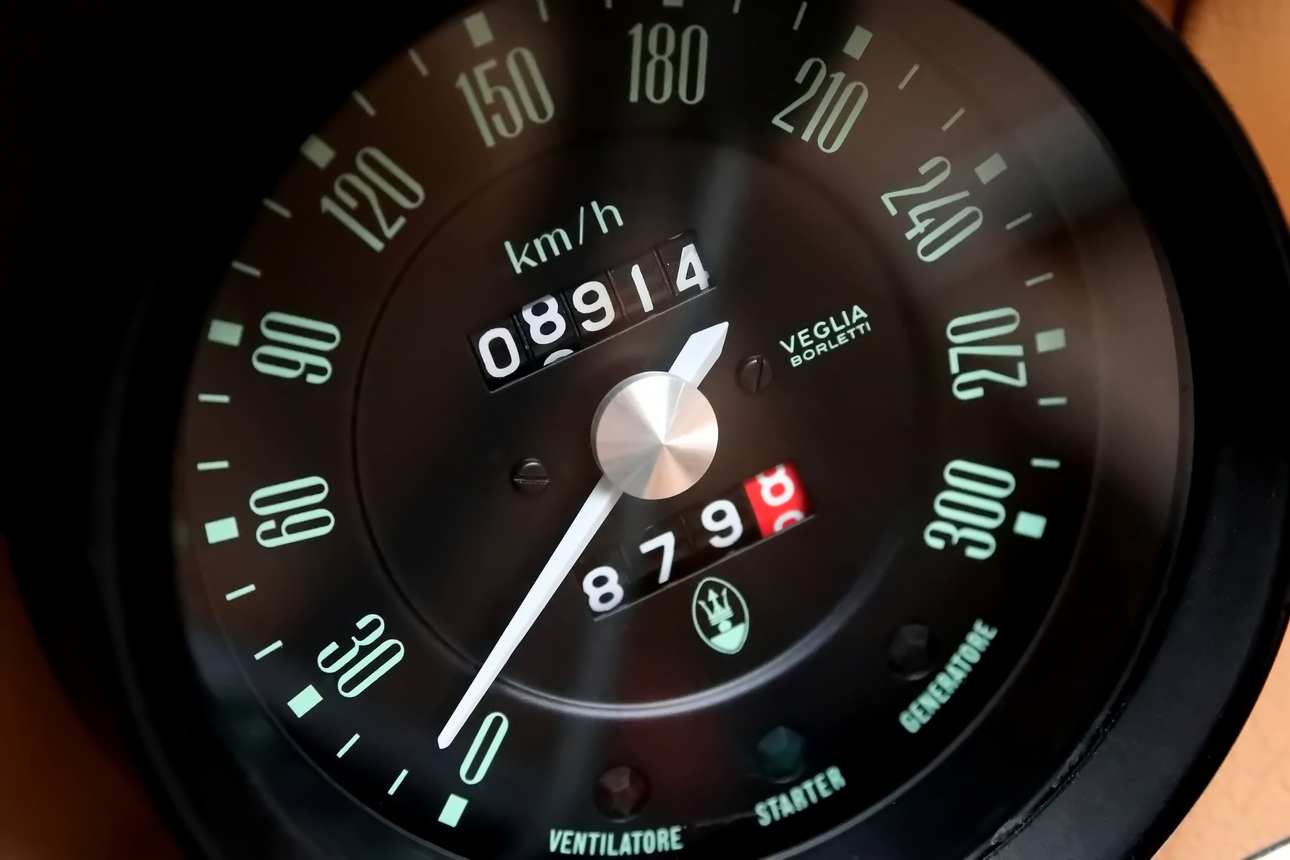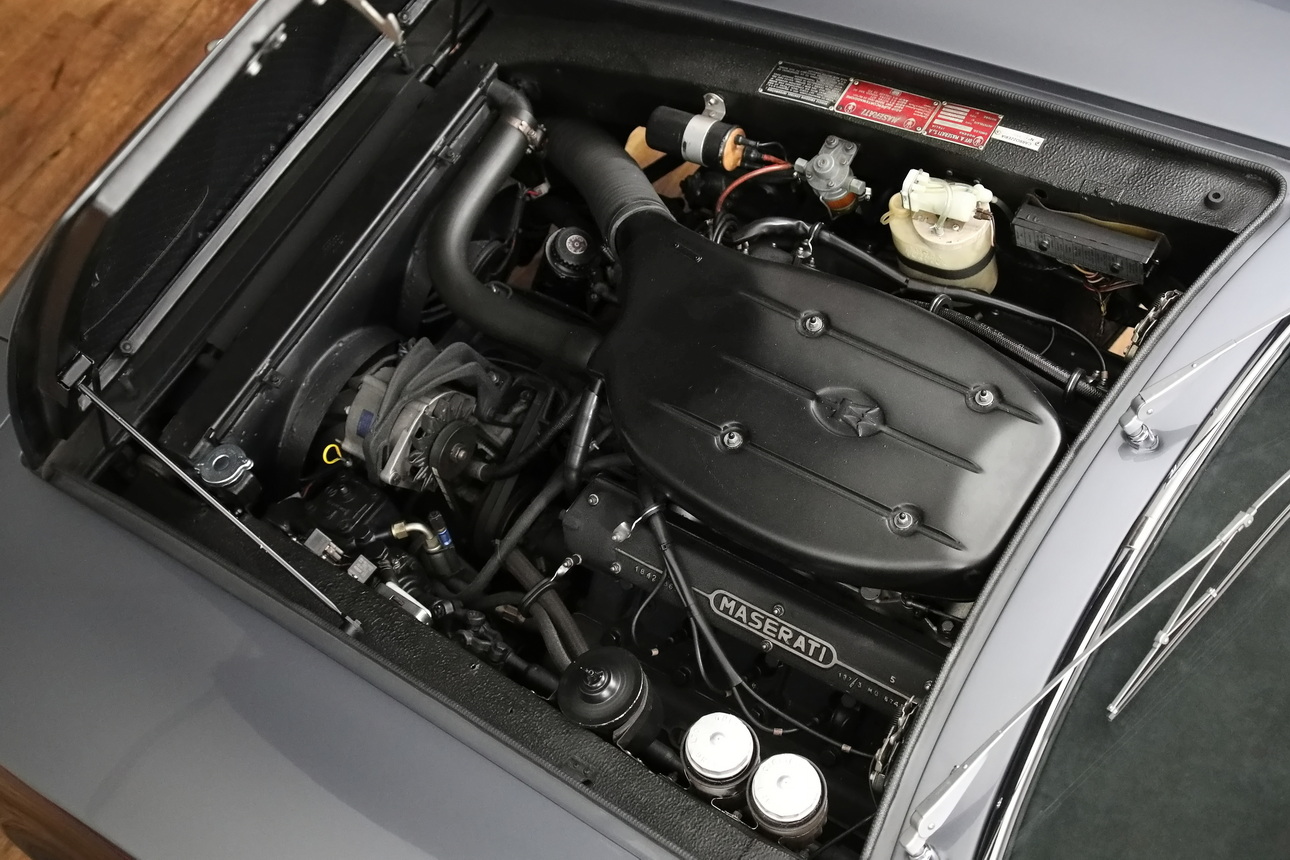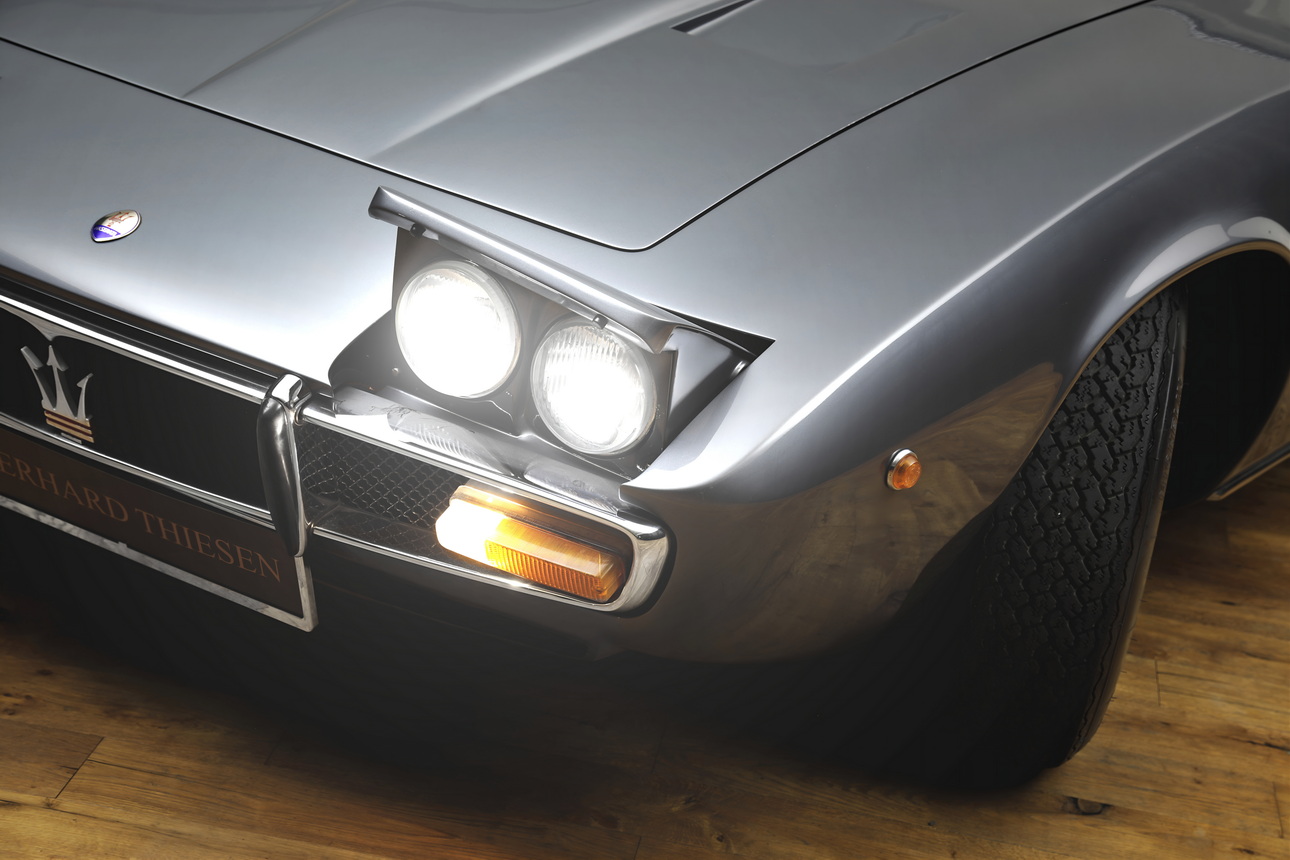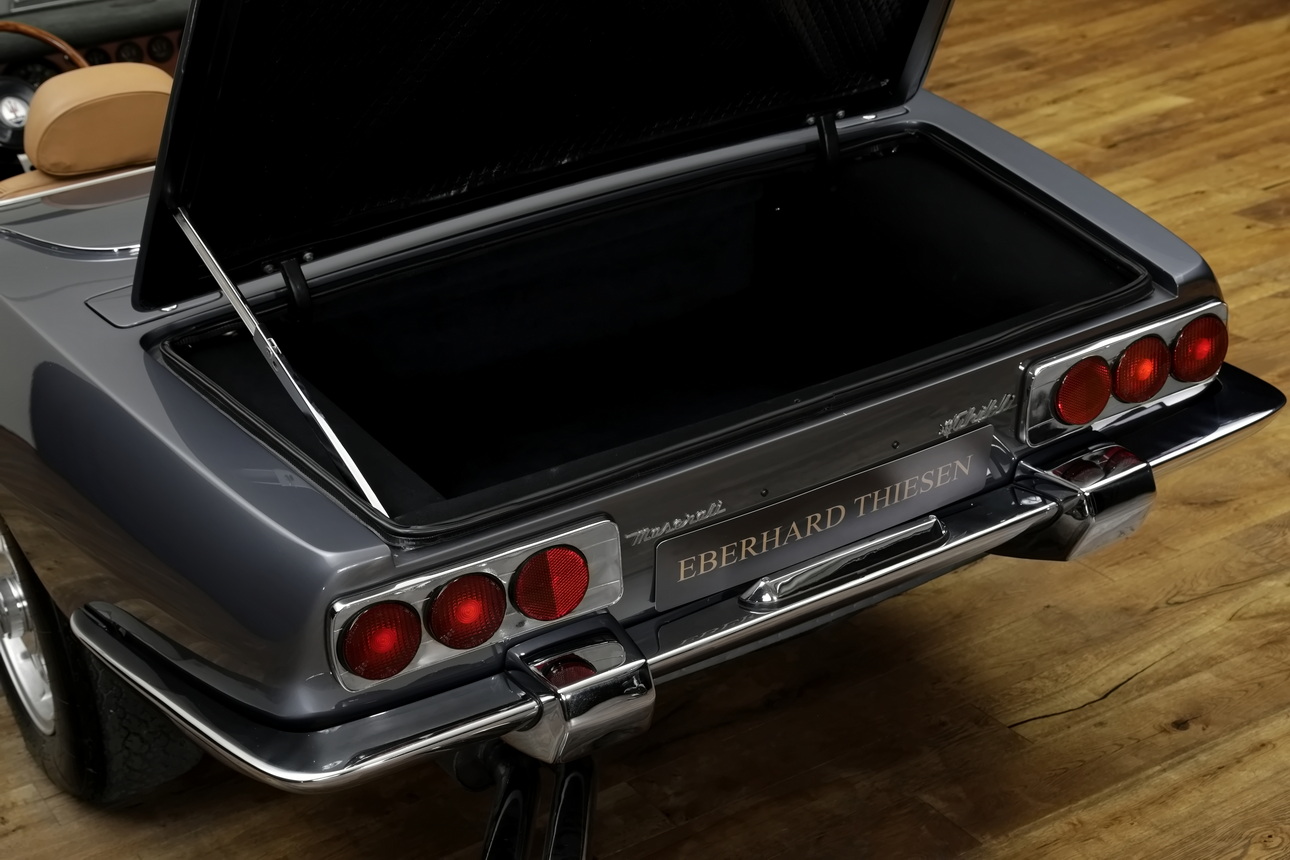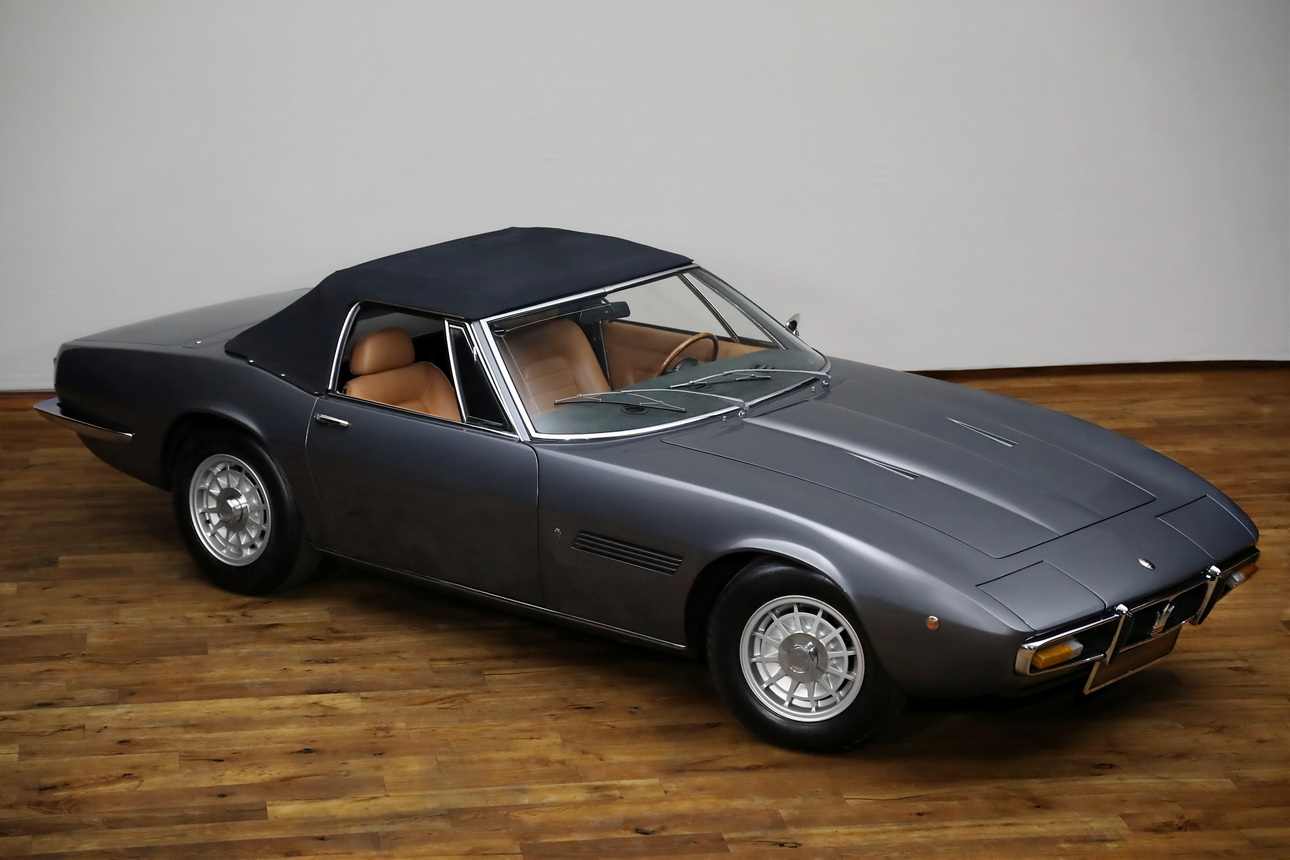Maserati Ghibli 4.7 Spyder
Highlights
Data & Facts
This Automobile
According to the available FIVA card, this Maserati Ghibli Spyder with a 4.7-litre engine was commissioned at the factory in November 1969 and completed in September 1970. It was then shipped to the USA, where the sports car was delivered to its first owner (name known) in California. This example is an original factory Spyder, of which only 125 were built in total – thereof 83 units with a 4.7 litre engine.
The motor car, equipped with an automatic transmission, remained in the USA until 1996 and then came to Germany via the Munich dealer for sports and luxury cars ‘Auto König’. The Ghibli Spyder found a new owner in June of the same year: the well-known German automotive and motoring journalist and author of numerous books Jürgen Lewandowski, who remained loyal to the Ghibli Spyder until 2013. In 2003, he commissioned a restoration at the Carrozzeria Campana Oronio in Modena, Italy. In the course of this, the paintwork was changed from Copper (black) metallic to Anthracite grey metallic.
The interior was also renewed with leather in cognac brown (tan) and a dashboard in black suede. This colour scheme makes the car look particularly classy and stylish and provides it with a sophisticated touch. In 2012, a FIVA passport was issued to Jürgen Lewandowski for the car. One year later in July 2013, the car was passed on to a new owner in the Munich area, who also registered the car. The German vehicle registration documents for the owners are available. Subsequently in 2018, the car entered the collection of an Austrian logistics and freight entrepreneur, who would now like to pass it into new hands.
This Maserati Ghibli is a rare opportunity to acquire one of the 125 original factory Spyders in an extremely attractive appearance. The flat, elegant silhouette with the long bonnet is a ‘style statement’ itself. No soft top disturbs the shape when the roof is open, as it disappears completely under a metal cover. At the rear of the Spyder, the long twin-pipe exhaust system is a typical Maserati style feature of the late 1960s / 1970s.
Model History
The Maserati Ghibli was initially presented as a fastback coupé at the Turin Motor Show in autumn 1966 and was supplemented two years later by an open-top version as the Spyder. It was the first two-seater sports car from Maserati with an eight-cylinder engine, which was necessary in order not to fall further behind Ferrari and Lamborghini in terms of motorisation.
The special attraction of the Ghibli was (and still is) its modern design, which was considered a great hit and eye-catcher with its clear lines. It was designed by Giorgio Giugiaro, who worked for the Ghia design studio in Turin at the time. The Ghibli was the first work that Giugiaro realised after leaving Bertone. The coupé's ‘lightning-fast’ proportions with a flat silhouette, long bonnet, flat front with pop-up headlights and a fastback rear were style-defining. This shape could be perfectly adapted to an open Spyder version with a steep windscreen, which was available from 1969. The Ghibli Spyder was a pure two-seater, whose soft top was folded up behind the seats under a metal cover flap. To increase torsional rigidity, the Spyder was given reinforcements in the sills and on the transmission tunnel.
The Coupé and Spyder were powered by a V8 engine with a double overhead camshaft (DOHC). The engine was available in two output versions: 4.7-litre displacement with around 310 hp and a more powerful 4.9-litre version with 335 hp in the Ghibli SS, which reached a top speed of 270 km/h. Power transmission was handled by a manual five-speed gearbox from ZF as standard. From 1968, a three-speed automatic transmission from BorgWarner was also available as an option. A power steering – again from ZF – could also be ordered. The automatic transmission was a common feature, as the USA was the main sales market. Minor changes were made to the Ghibli at the end of 1970, mainly to the headlights, dashboard and headrests. Maserati built the chassis and engine for the Ghibli, while the body was manufactured by coach builders Vignale and Ghia.
The sophisticated Ghibli was one of the most desirable and expensive production cars in the world at the time, playing in the league of Ferrari and Lamborghini. It was even more expensive than the competing models from Italy. In Germany, it cost DM 3,000 more than a Lamborghini Miura or a Ferrari Daytona, both of which had V12 engines and similar performance to the Ghibli. A total of 1,250 Ghibli units (with both engines) were built during the six-year production period, a considerable number for a small manufacturer at the time. However, only 125 of the vehicles were Spyders – 83 with a 4.7-litre engine and 45 with a 4.9-litre engine.
This Automobile
According to the available FIVA card, this Maserati Ghibli Spyder with a 4.7-litre engine was commissioned at the factory in November 1969 and completed in September 1970. It was then shipped to the USA, where the sports car was delivered to its first owner (name known) in California. This example is an original factory Spyder, of which only 125 were built in total – thereof 83 units with a 4.7 litre engine.
The motor car, equipped with an automatic transmission, remained in the USA until 1996 and then came to Germany via the Munich dealer for sports and luxury cars ‘Auto König’. The Ghibli Spyder found a new owner in June of the same year: the well-known German automotive and motoring journalist and author of numerous books Jürgen Lewandowski, who remained loyal to the Ghibli Spyder until 2013.
In 2003, he commissioned a restoration at the Carrozzeria Campana Oronio in Modena, Italy. In the course of this, the paintwork was changed from Copper (black) metallic to Anthracite grey metallic. The interior was also renewed with leather in cognac brown (tan) and a dashboard in black suede. This colour scheme makes the car look particularly classy and stylish and provides it with a sophisticated touch. In 2012, a FIVA passport was issued to Jürgen Lewandowski for the car. One year later in July 2013, the car was passed on to a new owner in the Munich area, who also registered the car. The German vehicle registration documents for the owners are available. Subsequently in 2018, the car entered the collection of an Austrian logistics and freight entrepreneur, who would now like to pass it into new hands.
This Maserati Ghibli is a rare opportunity to acquire one of the 125 original factory Spyders in an extremely attractive appearance. The flat, elegant silhouette with the long bonnet is a ‘style statement’ itself. No soft top disturbs the shape when the roof is open, as it disappears completely under a metal cover. At the rear of the Spyder, the long twin-pipe exhaust system is a typical Maserati style feature of the late 1960s / 1970s.
Model History
The Maserati Ghibli was initially presented as a fastback coupé at the Turin Motor Show in autumn 1966 and was supplemented two years later by an open-top version as the Spyder. It was the first two-seater sports car from Maserati with an eight-cylinder engine, which was necessary in order not to fall further behind Ferrari and Lamborghini in terms of motorisation.
The special attraction of the Ghibli was (and still is) its modern design, which was considered a great hit and eye-catcher with its clear lines. It was designed by Giorgio Giugiaro, who worked for the Ghia design studio in Turin at the time. The Ghibli was the first work that Giugiaro realised after leaving Bertone. The coupé's ‘lightning-fast’ proportions with a flat silhouette, long bonnet, flat front with pop-up headlights and a fastback rear were style-defining. This shape could be perfectly adapted to an open Spyder version with a steep windscreen, which was available from 1969. The Ghibli Spyder was a pure two-seater, whose soft top was folded up behind the seats under a metal cover flap. To increase torsional rigidity, the Spyder was given reinforcements in the sills and on the transmission tunnel.
The Coupé and Spyder were powered by a V8 engine with a double overhead camshaft (DOHC). The engine was available in two output versions: 4.7-litre displacement with around 310 hp and a more powerful 4.9-litre version with 335 hp in the Ghibli SS, which reached a top speed of 270 kph. Power transmission was handled by a manual five-speed gearbox from ZF as standard. From 1968, a three-speed automatic transmission from BorgWarner was also available as an option. A power steering – again from ZF – could also be ordered. The automatic transmission was a common feature, as the USA was the main sales market. Minor changes were made to the Ghibli at the end of 1970, mainly to the headlights, dashboard and headrests. Maserati built the chassis and engine for the Ghibli, while the body was manufactured by coach builders Vignale and Ghia.
The sophisticated Ghibli was one of the most desirable and expensive production cars in the world at the time, playing in the league of Ferrari and Lamborghini. It was even more expensive than the competing models from Italy. In Germany, it cost DM 3,000 more than a Lamborghini Miura or a Ferrari Daytona, both of which had V12 engines and similar performance to the Ghibli. A total of 1,250 Ghibli units (with both engines) were built during the six-year production period, a considerable number for a small manufacturer at the time. However, only 125 of the vehicles were Spyders – 83 with a 4.7-litre engine and 45 with a 4.9-litre engine.
